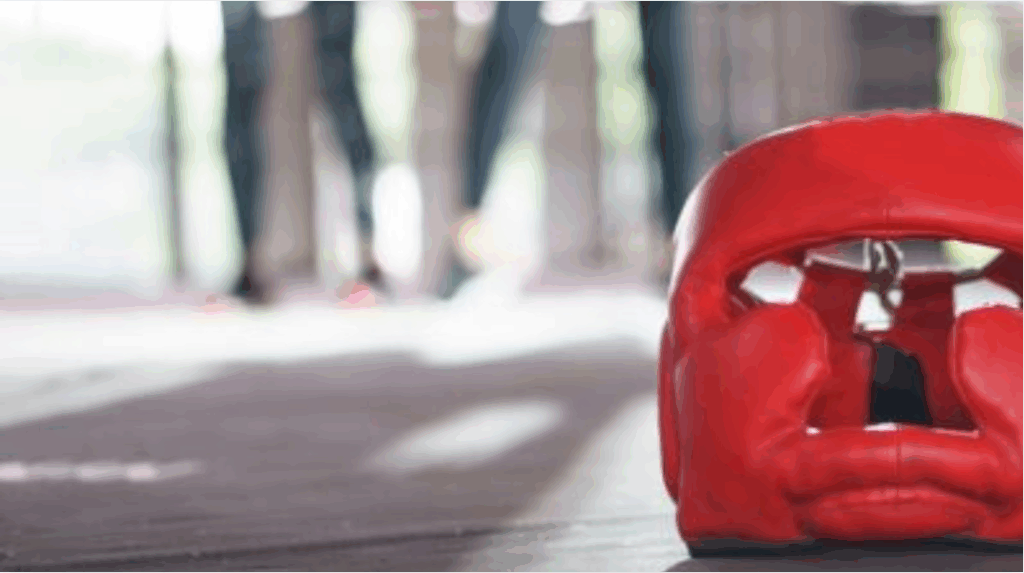You might think boxing headgear keeps your brain safe from concussions, but experts suggest otherwise. Headgear primarily prevents cuts and bruises, not the internal jarring that leads to brain injuries. It may cushion the blow to some extent, but it can’t prevent the brain from shifting within the skull. Could it be that the very equipment meant to protect you might not be doing its job?
What Is Boxing Headgear Designed to Do?
Boxing headgear plays an important role in keeping your face protected when you’re in the ring. When punches are flying toward your head, having the right gear isn’t optional. It’s just smart.
Headgear’s main job isn’t to stop a knockout. It’s there to cut down on surface damage like cuts, black eyes, and busted noses. It covers the spots that tend to get hit the most, adding a layer of padding to help soften the blow.
What it really does well is spread out the impact so one punch doesn’t do all the damage in one place. It can definitely help you walk out of sparring without looking like you lost a fight. When you’re not worried about getting cut up, you can stay focused on your timing, footwork, and overall game plan.

How Concussions Actually Happen in Boxing
While boxing headgear offers some protection, it doesn’t fully prevent concussions. In boxing, concussions occur when the brain experiences a sudden jolt or impact.
When you take a punch to the head, your brain can move rapidly inside your skull, leading to brain trauma. This movement causes damage to brain cells, resulting in a concussion. Despite the presence of headgear, the force of a punch can still cause significant brain movement, compromising concussion prevention.
Headgear primarily reduces superficial injuries like cuts and bruises, but it doesn’t absorb all the impact energy. The rotational forces from a hit can twist the brain, further increasing the risk of injury. Understanding how these forces work is crucial for anyone involved in boxing to address brain trauma concerns better.

What the Experts Say About Headgear and Concussions
Although people debate how effective headgear is at preventing concussions, experts agree it doesn’t offer complete protection. Experts highlight that concussions often result from the brain moving inside the skull due to forceful impacts, which headgear can’t fully prevent.
Moreover, some suggest that the added bulk of the headgear might even contribute to rotational forces, potentially exacerbating the risk. It’s crucial to understand that headgear reduces superficial injuries rather than protects against the complex forces causing concussions.
Therefore, relying solely on headgear isn’t the answer to preventing concussive injuries in boxing.
Misconceptions About Headgear
Despite widespread use in the sport, many misunderstand the role and capabilities of boxing headgear. You might think that headgear completely prevents concussions, but that’s not the case. It doesn’t stop concussions; instead, it primarily protects against cuts, bruises, and superficial injuries.
On the plus side, it offers some level of protection for your face and skin, which can reduce the risk of facial injuries. However, it’s not foolproof when it comes to preventing brain injuries. Wearing headgear can sometimes make fighters feel overly protected, which might lead them to take more chances during a match.
So, while headgear has its benefits, relying on it to stop concussions isn’t wise. Always prioritize your overall safety.

When and Why Headgear Still Matters
Even though headgear won’t stop concussions, it still plays a crucial role in boxing. For you, prioritizing boxing safety gear means acknowledging that headgear can minimize cuts, bruises, and swelling during training. It acts as a protective barrier, absorbing some of the impact from punches, especially when you’re sparring with headgear. It can help you stay in the game longer without the distraction of facial injuries.
When you’re in the ring, headgear can also provide a psychological boost. Having that added layer of protection can boost your confidence, making it easier to try out new moves or train more aggressively. While headgear isn’t a cure-all, it still matters for both physical protection and mental assurance during your boxing journey.
Frequently Asked Questions
How Does Boxing Headgear Affect a Boxer’s Vision and Performance?
Boxing headgear can obstruct your peripheral vision, making it harder to anticipate punches. It might also affect your performance by adding weight and causing discomfort. You’ll need to adjust to the reduced visibility and increased bulk.
How Often Should Boxing Headgear Be Replaced for Optimal Safety?
You should replace boxing headgear every six months to a year, depending on usage and wear. Regular inspections for damage or deterioration ensure optimal safety. If you notice significant wear, consider replacing it sooner for protection.
Does the Use of Headgear Differ Between Amateur and Professional Boxers?
You’ll notice that amateur boxers must use headgear during matches, while professionals typically don’t. The regulations differ because amateurs prioritize safety and developing skills, whereas professionals focus on entertainment, skill showcase, and often higher risk tolerance.
Are There Specific Brands of Headgear Recommended by Experts for Maximum Safety?
You’re wondering about specific brands for maximum safety. Experts often recommend Winning, Everlast, or Title headgear. They’ve got a solid reputation for quality and safety features, protecting you during intense sparring sessions.




